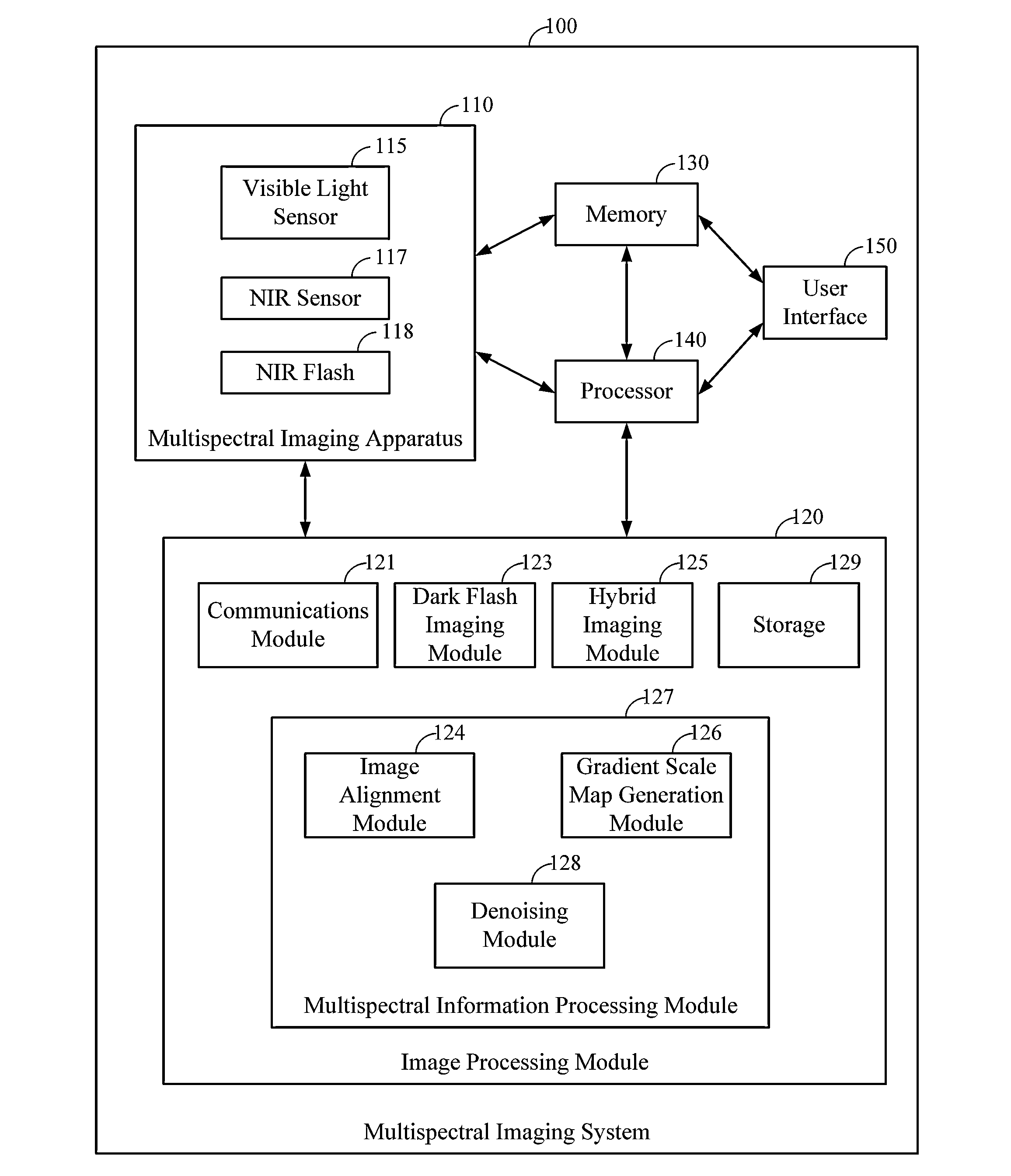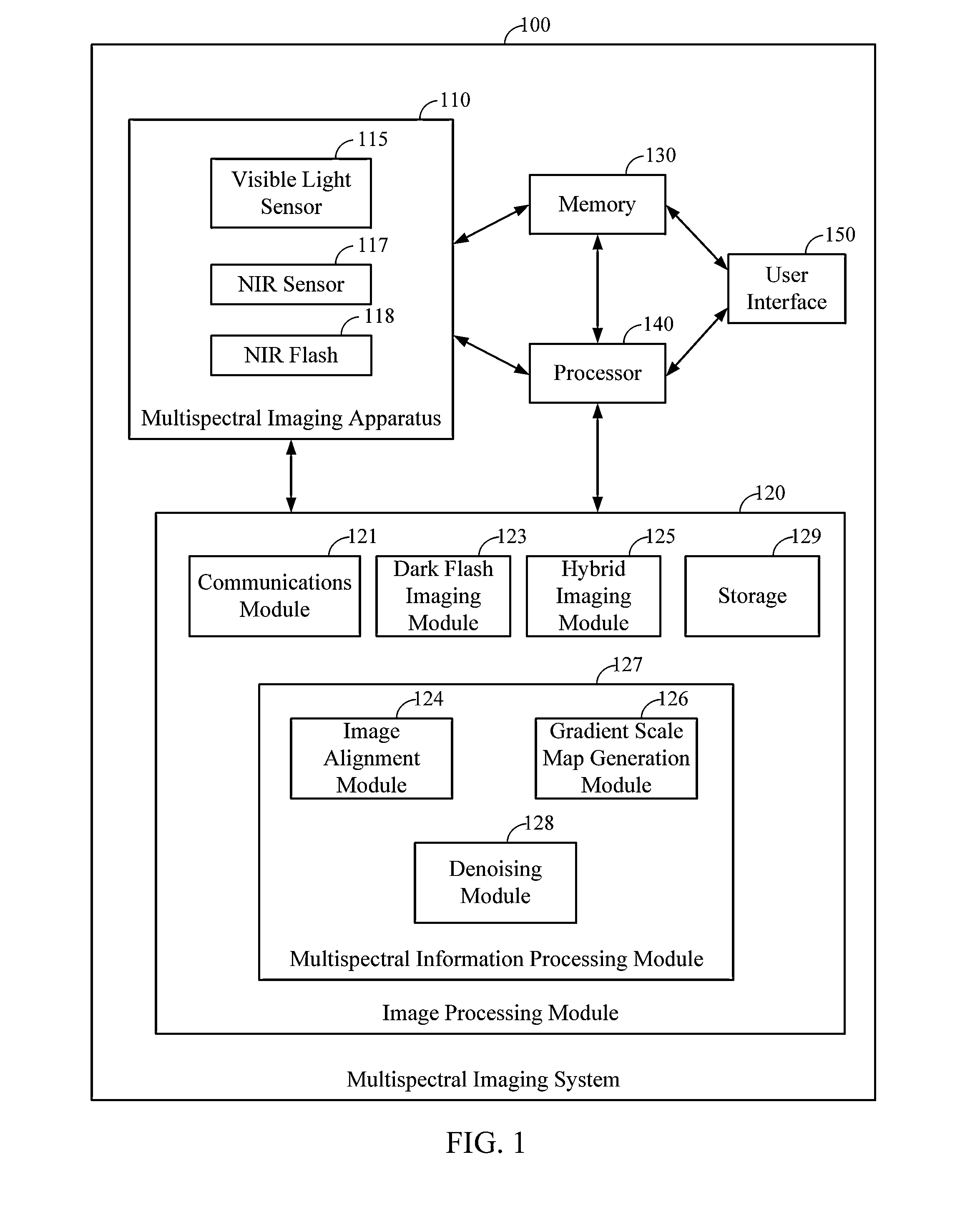Near infrared guided image denoising
a technology of infrared guided image and denoising, which is applied in the field of imaging systems and methods, can solve the problems of inability to take high-quality photographs and videos under low light conditions, inability to improve the signal-to-noise ratio (snr) and inability to take high-quality photographs and videos
- Summary
- Abstract
- Description
- Claims
- Application Information
AI Technical Summary
Benefits of technology
Problems solved by technology
Method used
Image
Examples
Embodiment Construction
[0020]Implementations disclosed herein provide systems, methods and apparatus for image de-noising applications. For example, as explained herein, it can be desirable to process a high-quality image from a noisy visible light image using a corresponding dark flash image, such as a near infrared (NIR) image. Although embodiments are described herein as employing NIR images, it will be appreciated that infrared and ultraviolet flash images may be used as well. The implementations disclosed herein can be used to capture a pair of visible light, for example RGB, and NIR images of the same image scene. During a de-noising process, the visible light and NIR images may be aligned on a pixel bases, and a gradient scale map may be introduced to relate gradient fields of the aligned visible light and NIR images.
[0021]The gradient scale map may be generated based on the differences and similarities between the gradient vectors of the visible light image and the gradient vectors of the NIR imag...
PUM
 Login to View More
Login to View More Abstract
Description
Claims
Application Information
 Login to View More
Login to View More - R&D
- Intellectual Property
- Life Sciences
- Materials
- Tech Scout
- Unparalleled Data Quality
- Higher Quality Content
- 60% Fewer Hallucinations
Browse by: Latest US Patents, China's latest patents, Technical Efficacy Thesaurus, Application Domain, Technology Topic, Popular Technical Reports.
© 2025 PatSnap. All rights reserved.Legal|Privacy policy|Modern Slavery Act Transparency Statement|Sitemap|About US| Contact US: help@patsnap.com



